Abstract
The principal causes of mortality of 754 individuals from a population of 1898 pensioners from four lead acid battery factories during the period 1 January 1925 to 31 December 1976 were studied. In addition the causes of 553 deaths occurring before retirement was also studied. All subjects were placed into one of three groups according to their history of lead exposure. Group 1 had no occupational lead exposure, group 2 low, and group 3 the highest. Mortality was studied in 16 principal disease groups as well as all causes combined. A significant excess of deaths from cerebrovascular accidents was found among pensioners dying between 1925 and 1976 in group 3 but not among men in the same exposure group dying in employment. There was also a significant excess of deaths from renal disease among this group. After 1958, however, the causes of most of the deaths from renal disease were not those likely to be associated with exposure to lead. There was no significant excess of deaths from all causes, nor was there a significant excess of deaths in any of the exposure groups from cancer, hypertensive disease, nor any other circulatory disease. There was no excess of observed to expected deaths among any of the three groups of women in any of the cause groups examined. After the introduction of regular blood lead analysis in 1964 the blood lead distribution in men in group 3 had by 1976 come down to roughly the same level as group 2 in 1965-7. Since there was no excess of deaths in any of the 16 categories studied among group 2 subjects present conditions are probably now adequate to prevent any excess of mortality in any of the three groups.
Full text
PDF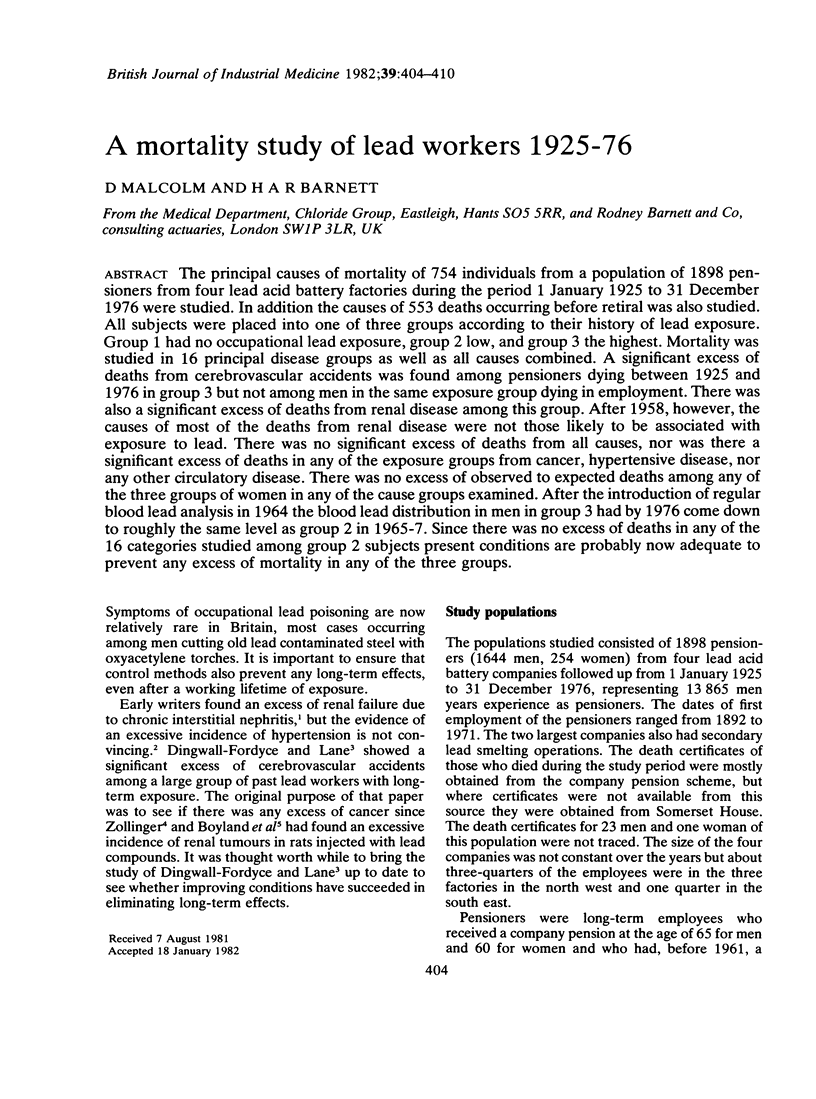
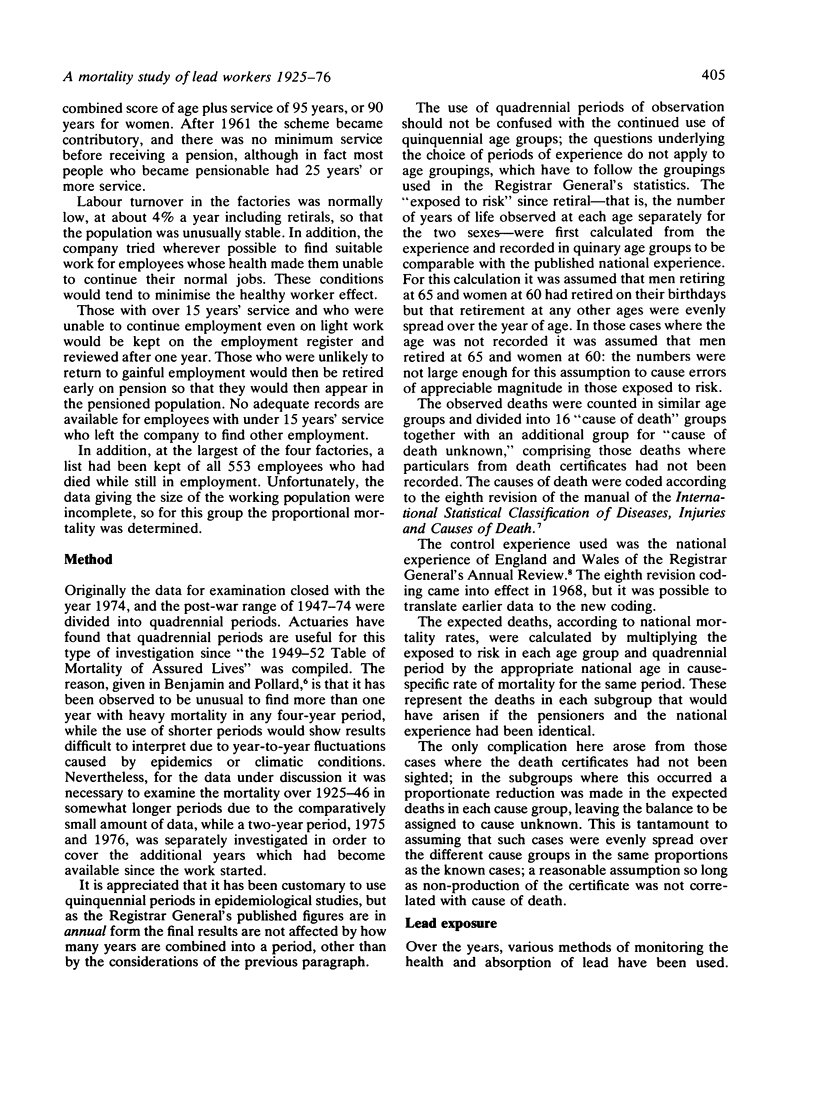
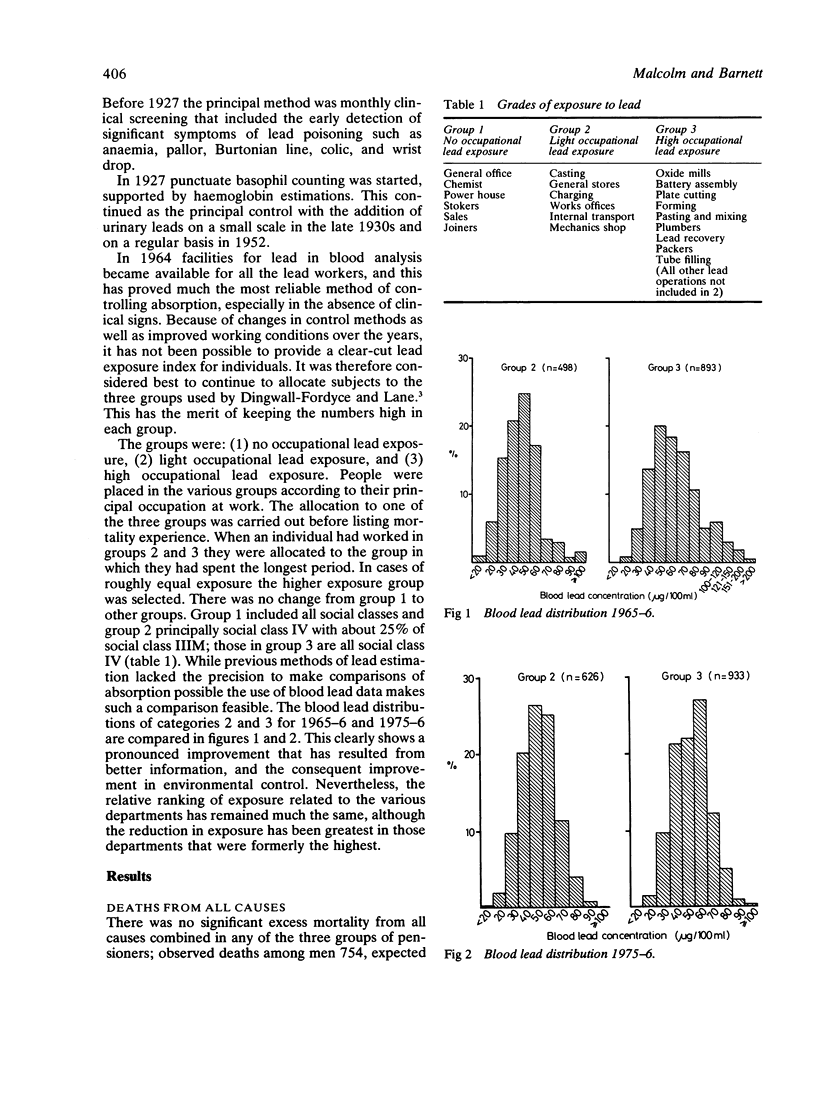
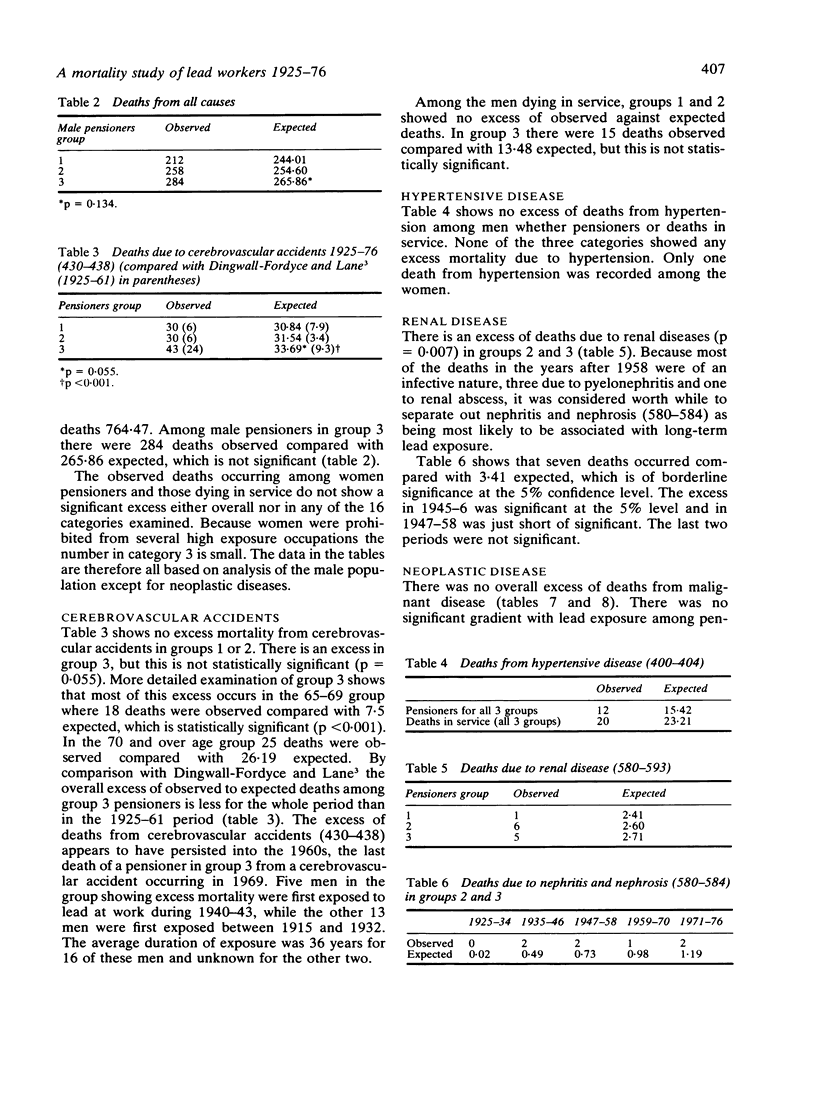
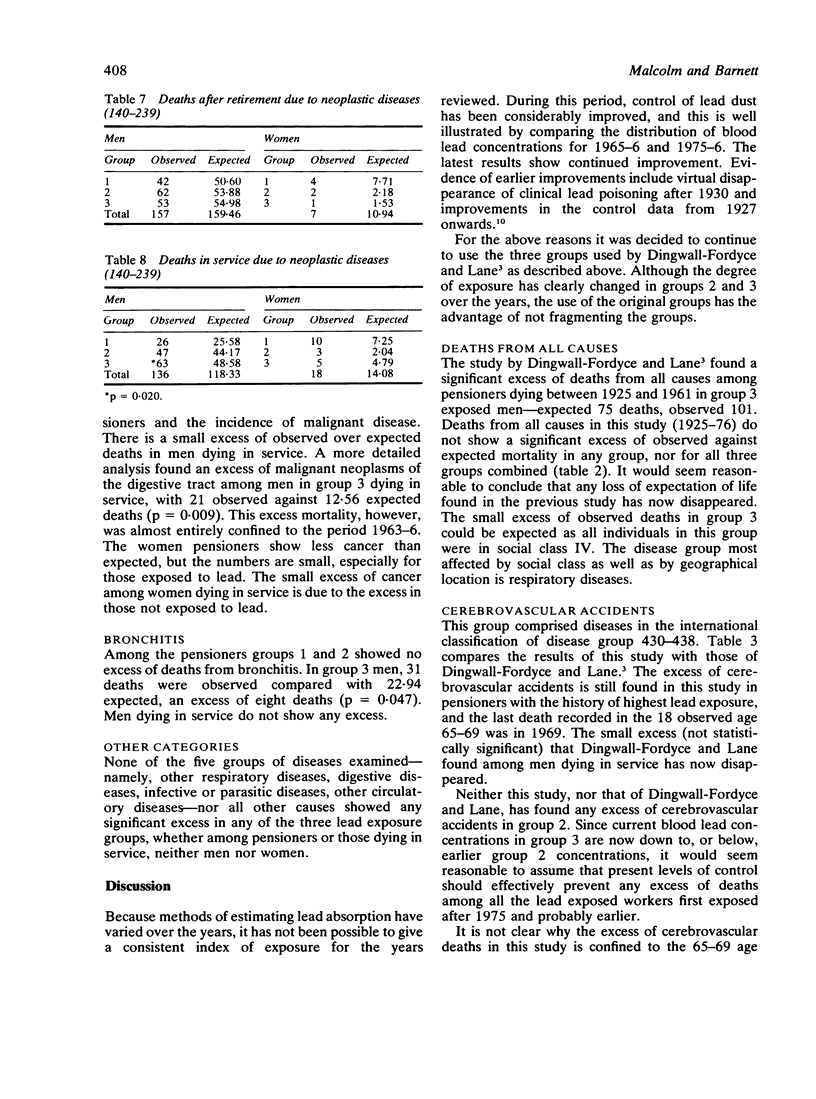
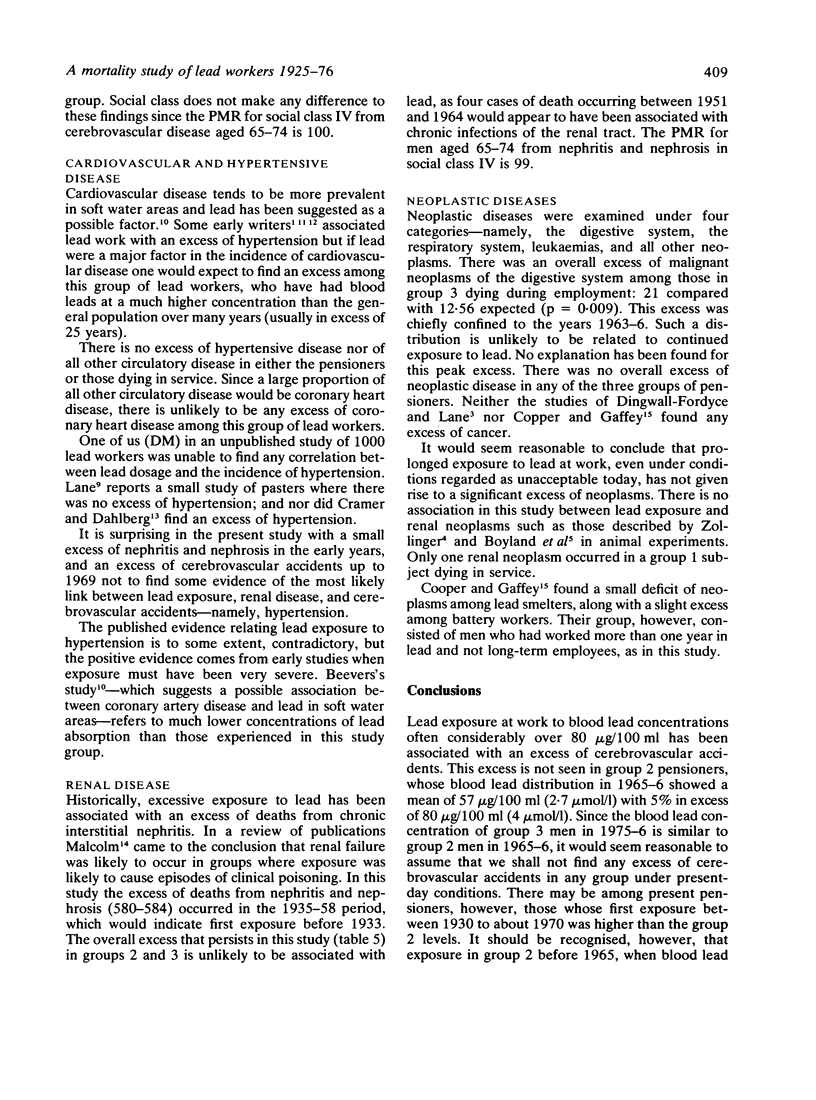
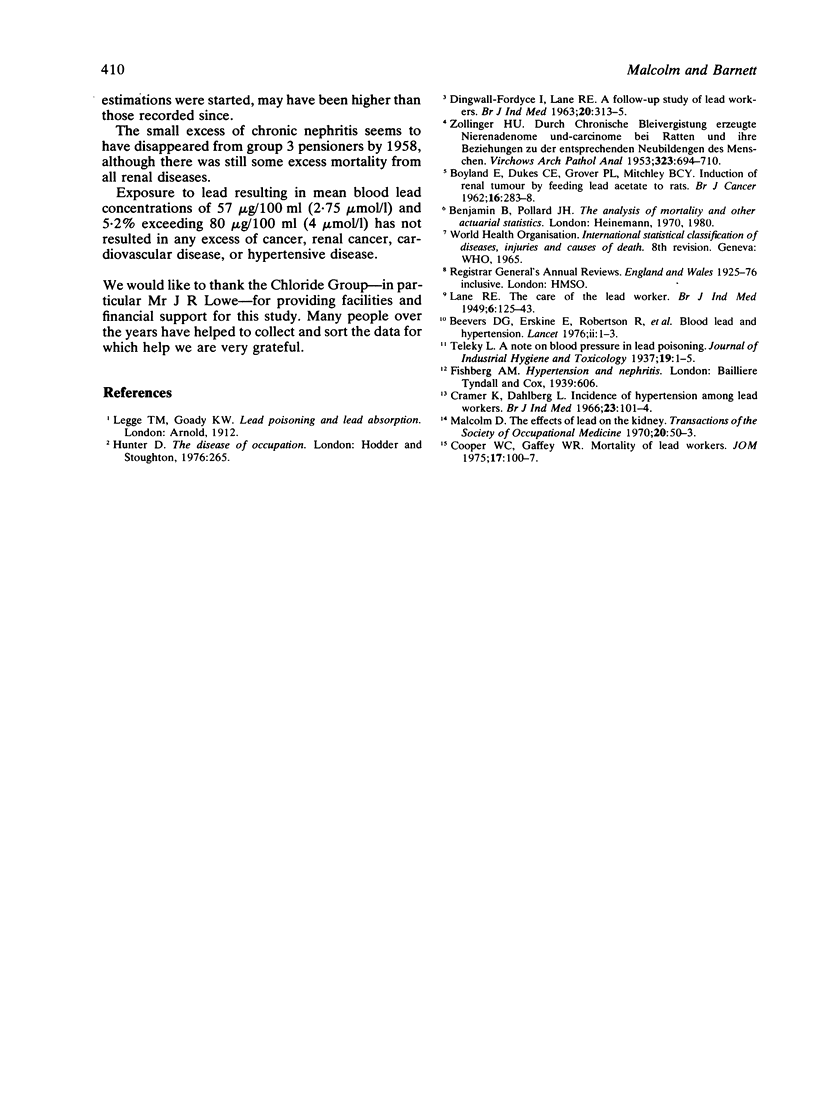
Selected References
These references are in PubMed. This may not be the complete list of references from this article.
- BOYLAND E., DUKES C. E., GROVER P. L., MITCHLEY B. C. The induction of renal tumors by feeding lead acetate to rats. Br J Cancer. 1962 Jun;16:283–288. doi: 10.1038/bjc.1962.33. [DOI] [PMC free article] [PubMed] [Google Scholar]
- Cooper W. C., Gaffey W. R. Mortality of lead workers. J Occup Med. 1975 Feb;17(2):100–107. doi: 10.1097/00043764-197502000-00012. [DOI] [PubMed] [Google Scholar]
- Cramér K., Dahlberg L. Incidence of hypertension among lead workers. A follow-up study based on regular control over 20 years. Br J Ind Med. 1966 Apr;23(2):101–104. doi: 10.1136/oem.23.2.101. [DOI] [PMC free article] [PubMed] [Google Scholar]
- DINGWALL-FORDYCE I., LANE R. E. A FOLLOW-UP STUDY OF LEAD WORKERS. Br J Ind Med. 1963 Oct;20:313–315. doi: 10.1136/oem.20.4.313. [DOI] [PMC free article] [PubMed] [Google Scholar]
- Malcolm D. The effects of lead on the kidney. Trans Soc Occup Med. 1970 Apr;20(2):50–53. doi: 10.1093/occmed/20.2.50. [DOI] [PubMed] [Google Scholar]
- ZOLLINGER H. U. Durch chronische Bleivergiftung erzeugte Nierenadenome und -carcinome bei Ratten und ihre Beziehungen zu den entsprechenden Neubildungen des Menschen. Virchows Arch Pathol Anat Physiol Klin Med. 1953;323(6):694–710. doi: 10.1007/BF00956266. [DOI] [PubMed] [Google Scholar]


